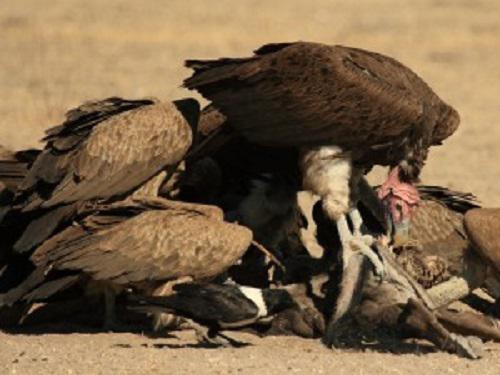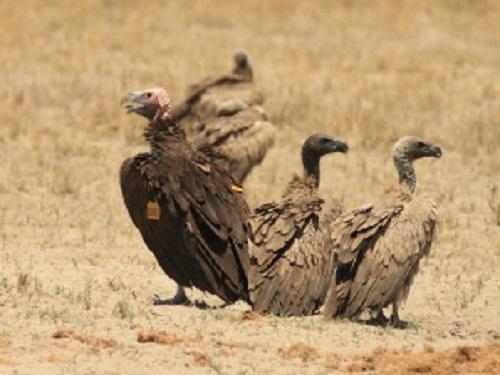Pete Hancock
This project aims to determine the movements of Lappet-faced Vultures in and around the Makgadikgadi Pans Important Bird Area.

Satellite transmitters will be used to determine the movements of Lappet-faced Vultures in and around the Makgadikgadi Pans Important Bird Area (their main breeding area in Botswana based on current knowledge) in order to measure to what extent they come into contact with people and are susceptible to human-induced threats. Documented home ranges from other studies are relatively small (500 km2), but it is hypothesised that immatures in particular move over larger areas and may be subject to poisoning and other escalating threats. The key areas used by the birds will be mapped against other variables such as human settlement, livestock and wildlife densities etc. in order to identify any areas of potential/actual conflict with humans. The information gathered will also show to what extent the vultures use other large protected areas such as the Central Kalahari Game Reserve.

This pilot project will pioneer Lappet-faced Vulture capture and satellite tracking in Botswana since the birds will need to be caught in order to have the transmitters fitted. A variety of capture methods will be employed, based on best practices from other vulture researchers; available information shows that the birds are difficult to catch, so this is a key component of the study. The project also has a capacity-building component and local Botswana citizens will be trained in the capture and handling of the vultures. The capture and fitting of satellite devices will take place during February 2012.

The information collected will inform conservation action, and depending on the findings, appropriate conservation measures will be formulated and implemented e.g. adjustment of protected area boundaries, public awareness campaign, provision of supplementary water points/feeding stations etc. Ultimately the project will lead to the development of a national Species Action Plan for Lappet-faced Vultures in Botswana. Since all vulture species in Botswana are considered globally threatened, insights into the Lappet-faced Vulture situation are likely to have important implications for other vultures too; in this way, the Lappet-faced Vulture will be a flagship for other raptors and scavenging birds.